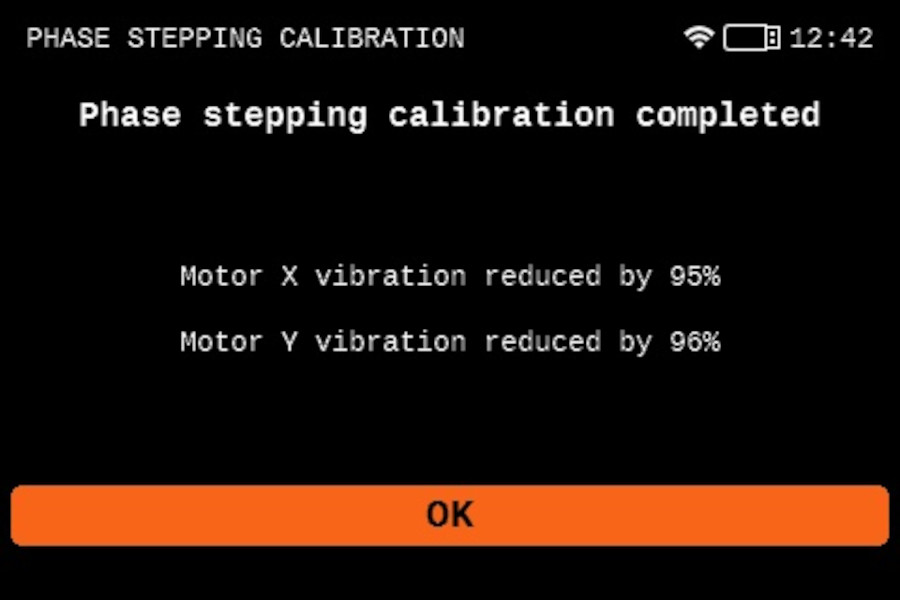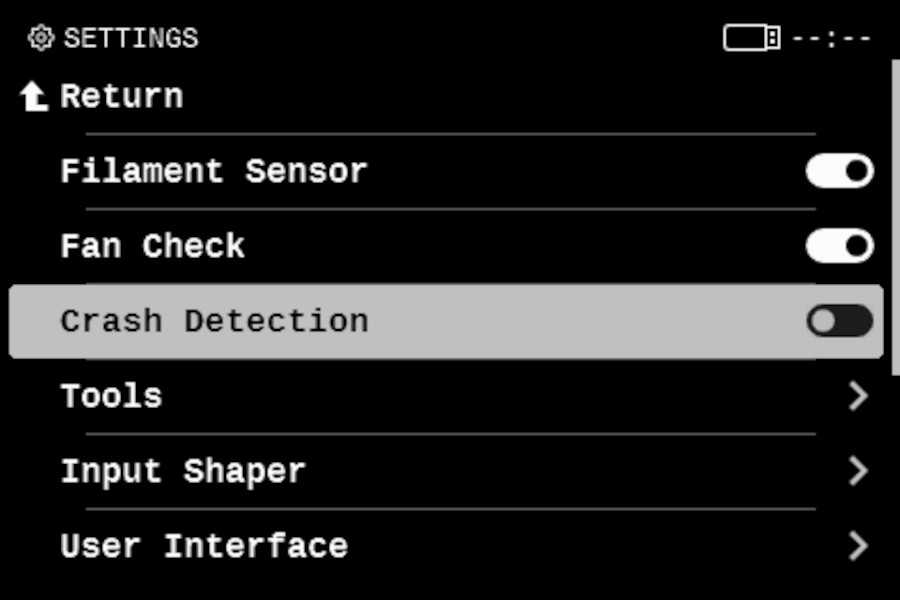La función del Phase Stepping personaliza la señal de accionamiento para cada motor, personalizando la señal de accionamiento para cada motor. Esto soluciona discrepancias como los artefactos finos visibles (VFAs) y el ruido causado por la variación natural en la fabricación de motores paso a paso.
Calibración del Phase Stepping
La calibración del phase stepping forma parte del asistente inicial. Para acceder a la función sin el selftest, ve al Menú LCD -> Control -> Calibraciones y Tests -> Calibración Phase Stepping .
La impresora moverá el cabezal de impresión (en el caso de la Multi-Cabezal, seleccionará el primer cabezal de impresión) al centro de la plataforma y moverá la herramienta en diagonal para los ejes X e Y a diferentes velocidades. Durante ese tiempo, se recopilarán los datos del acelerómetro situado en la placa Dwarf. El objetivo es medir las características de los motores y almacenar estos ajustes.

Calibración fallida
Si se interrumpe la calibración del Phase stepping y aparece el mensaje "Calibración fallida" en la pantalla, comprueba la tensión de las correas de la impresora.
Si el problema persiste incluso después de ajustar la tensión, puede que sea necesario desviarse hacia valores más altos o más bajos. Asegúrate de realizar el mismo ajuste en ambos lados.
Phase Stepping y detección de colisiones
Una vez habilitado el Phase stepping, ya sea a través del menú o mediante el selftest, la detección de fallos se deshabilita automáticamente. Por el momento, no es posible utilizar ambas funciones al mismo tiempo. Para deshabilitar el Phase stepping y habilitar la detección de fallos, ve al menú de la impresora y selecciona Configuración -> Hardware -> Phase stepping, y desactívalo. A continuación, ve al menú Configuración, selecciona Detección de accidentes y actívalo.
 |  |